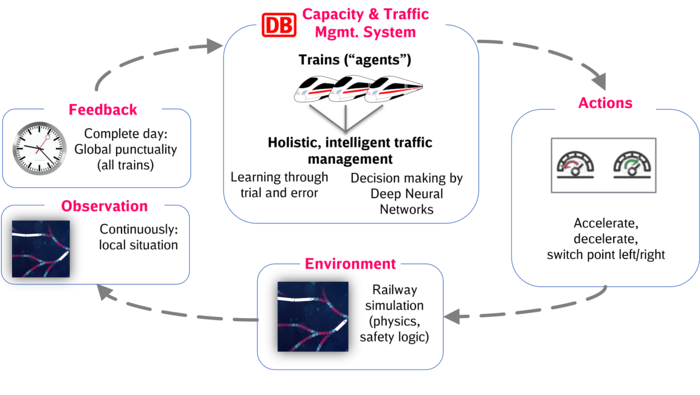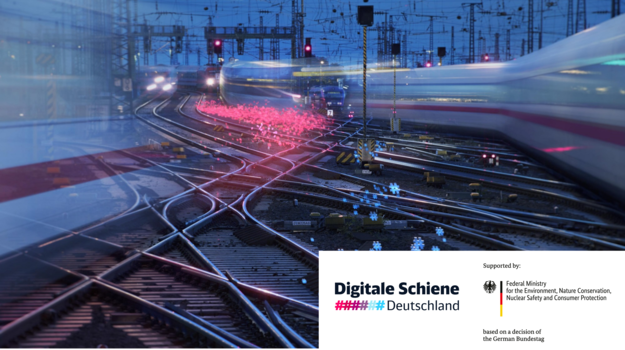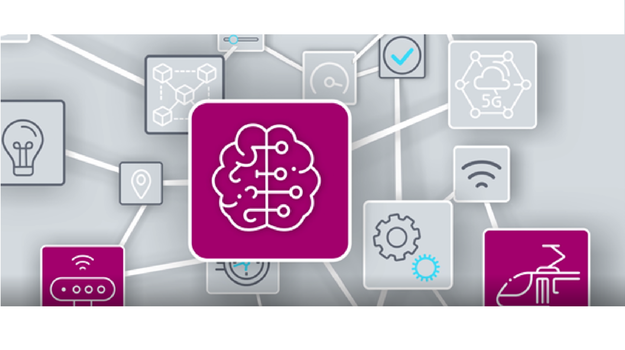Artificial Intelligence in the Capacity and Traffic Management System
The Optimized Railway Operation of the Future
Every day, over 40,000 regional, long-distance and freight train journeys take place on the German rail network. The Deutsche Bahn network alone covers around 33,000 kilometers of track, supporting trains and stations with a wide range of characteristics. When thousands of trains are on the move in dense traffic, rapid decisions must be made to adjust the operationsin the event of disruptions., These can trigger a cascade of further necessary changes. At this level of complexity, today’s largely manual planning and dispatching processes quickly reach their limits. To date, it has only been possible to partly support these processes with IT solutions. The main obstacle has been the lack of scalability of existing methods. It is now possible to overcome this limitation with AI systems that are capable of learning.
The Advantages at a Glance
In today’s network operations, local dispatchers at Deutsche Bahn’s operations centers take many individual decisions every day. These tasks will be largely automated in future, thereby reducing waiting times. Moreover, train sequencing decisions, track changes or re-routing will become easier. These can be computed more efficiently and implemented faster, allowing traffic to flow smoothly throughout the network. At the same time as construction site planning, timetable planning – which has to date taken place in parallel processes – will also be automated in a similar manner.
Where today timetables are created over a period of several months and in multiple stages, an integrated system will distribute network capacity more efficiently while focusing on the requirements of customers and stakeholders. Once trained, AI will be capable of computing highly detailed schedules extremely quickly, and the relevant system components then use them to manage the traffic. In future, the enormous scalability and reduction in complexity of learning AI will facilitate the real-time creation and amendment of timetables throughout the German rail network and optimize railroad traffic throughout the entire network. An AI-based, automated capacity and traffic management system (CTMS – Capacity & Traffic Management System) forms the basis for the technical implementation. Digitale Schiene Deutschland is therefore developing an automated planning and control system for the digital railroad system of the future.
The Technology in Action
In order to render AI usable for traffic management, a simulation environment was set up that digitally maps the railroad world in terms of timetabling and train dispatch. This allows AI algorithms to be trained under realistic conditions. Artificial intelligence gains its knowledge through so-called “reinforcement learning”. With the current CTMS prototypes, basic functions of the CTMS are demonstrated using microscopic simulation models, taking a small section of the network as an example. The ongoing expansion of the prototype aims to achieve both extended functionality and greater realism of the physics of driving.
The first operational use of the CTMS is planned for the Stuttgart Digital Node (SDN). Commencing in 2029, the CTMS will initially control the S-Bahn’s extended main line via ATO GoA 2 on the basis of digital interlocking and to ETCS Level 2 without signals.

The following video explains “reinforcement learning” as the fundamental AI method of tomorrow’s capacity and traffic management system.

